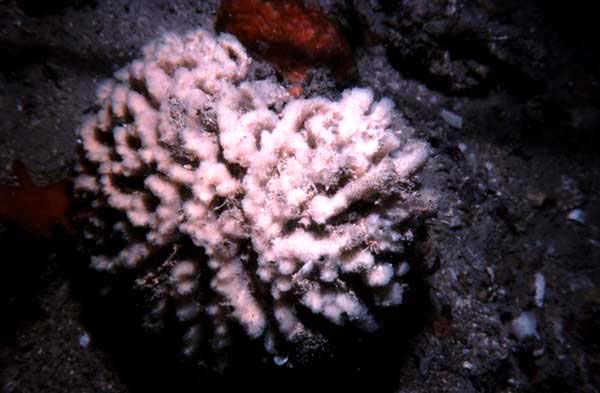Morphological description (show/hide)
| massive, subspherical, lobate; surface lobes form convoluted ridges, resembles a brain. | | pinkish beige | | dirty white in ethanol | | not visible | | fibrous, firm, compressible | | conulose, hispid, multispicular bundles of long styles protrude from surface | | no obvious axial compression; axial skeleton formed by bundles of spongin fibres and granular collagen, forms discrete compartments, interconnecting, reticulate, oval meshes (250�350 μm (d)), cored by tracts of multispicular, mostly shorter styles, in primary (vaguely ascending) tracts, but paucispicular in secondary (interconnecting) tracts; ascending tracts become increasingly plumose and increasingly cored by longer, more flexuous, styles near surface, longest styles protrude long way through surface; choanosome contains moderate numbers of very small, thick oxeas, sausage-shaped to toxa-like, but these are probably contaminants. | | bundles of long styles protrude on surface conules; bundles of short styles support tracts to conules; membranous between bundles | | 2 classes class 1: long, thin, curved or slightly flexuous; evenly rounded bases; 650�920 � 10�15 μm class 2: short, thick, slightly curved; bases variable; range from styles to anisoxeas, occasionally strongylote; points range from tapering to telescoped; 270�415 � 8�15 μm | | nil |
|
Reference (show/hide)
| Erpenbeck D, Hall K, Alvarez B, Büttner G, Sacher K, Schätzle S, Schuster A, Vargas S, Hooper JNA, Wörheide G (in press) The phylogeny of halichondrid demosponges: past and present re-visited with DNA-barcoding data. The phylogeny of halichondrid demosponges: past and present re-visited with DNA-barcoding data. Organisms Diversity & Evolution. |
|





